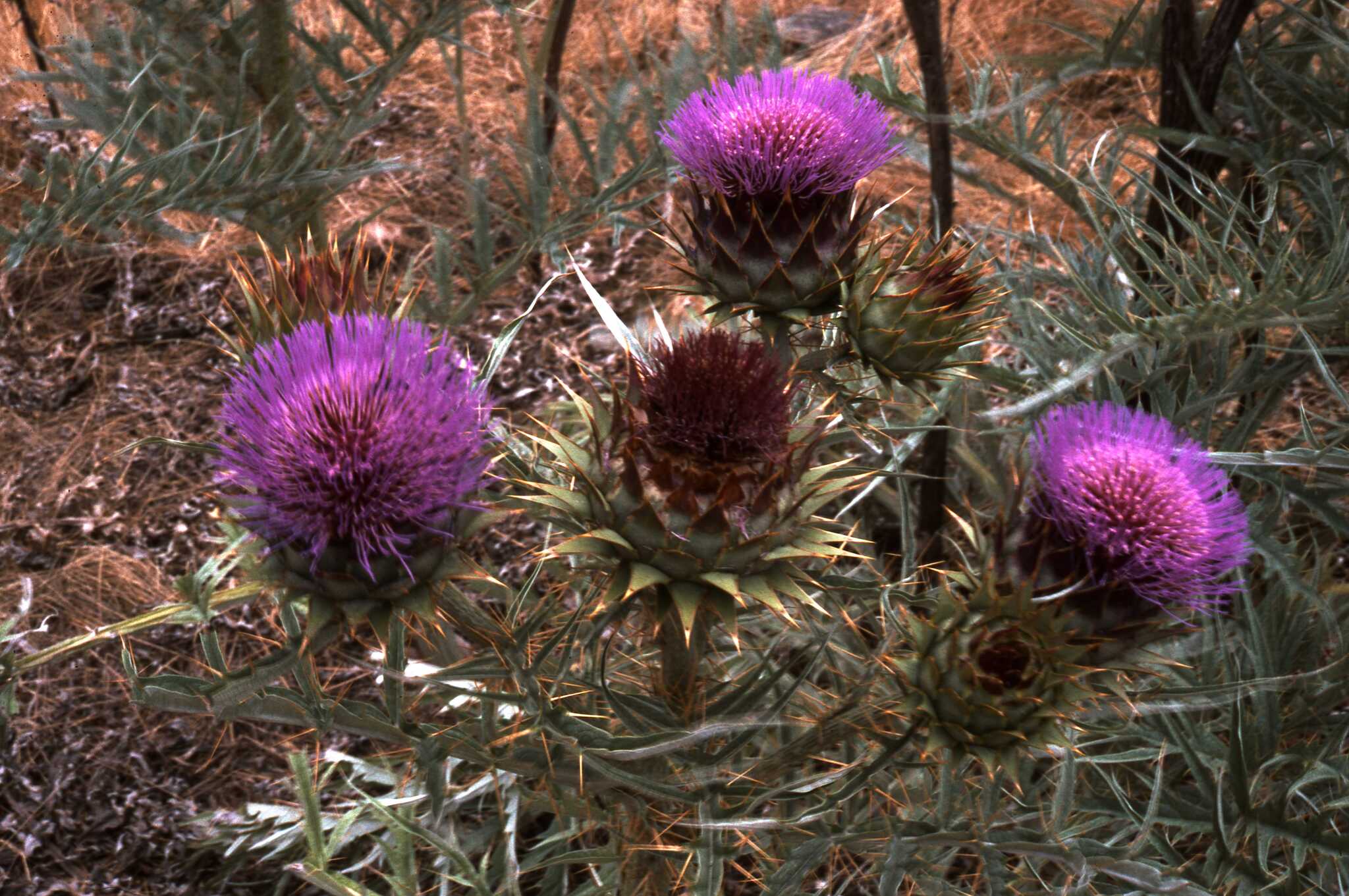
Greek kyon — dog, an allusion to the appendage on the involucral bracts, which resembles a dog’s tooth.
Perennial herbs, usually spiny. Stems erect, rarely absent. Leaves basal and/or along stems, alternate, margins divided, often spiny. Capitula diskoid, terminal, solitary or few in clusters, with stalks. Involucral bracts in several rows, overlapping, unequal, often spine-tipped. Receptacle with bristles, convex. Florets bisexual, tubular, purple, blue or white. Achenes obovoid, angular or slightly compressed, glabrous. Pappus of many feathery bristles, usually deciduous as a unit.
Two species have become naturalised in Australia, one is a noxious weed. Although some species are grown as vegetables (for the leaves and young capitula), they should be avoided as they have the potential to become troublesome weeds. Always remove and destroy capitula before mature achenes are shed.
Mostly very spiny plants; involucral bracts usually spine-tipped.
8 species from Europe, the Middle East, N Africa, and the Canary Islands.
Source: (2002). Asteraceae. In: . Horticultural Flora of South-eastern Australia. Volume 4. Flowering plants. Dicotyledons. Part 3. The identification of garden and cultivated plants. University of New South Wales Press.
